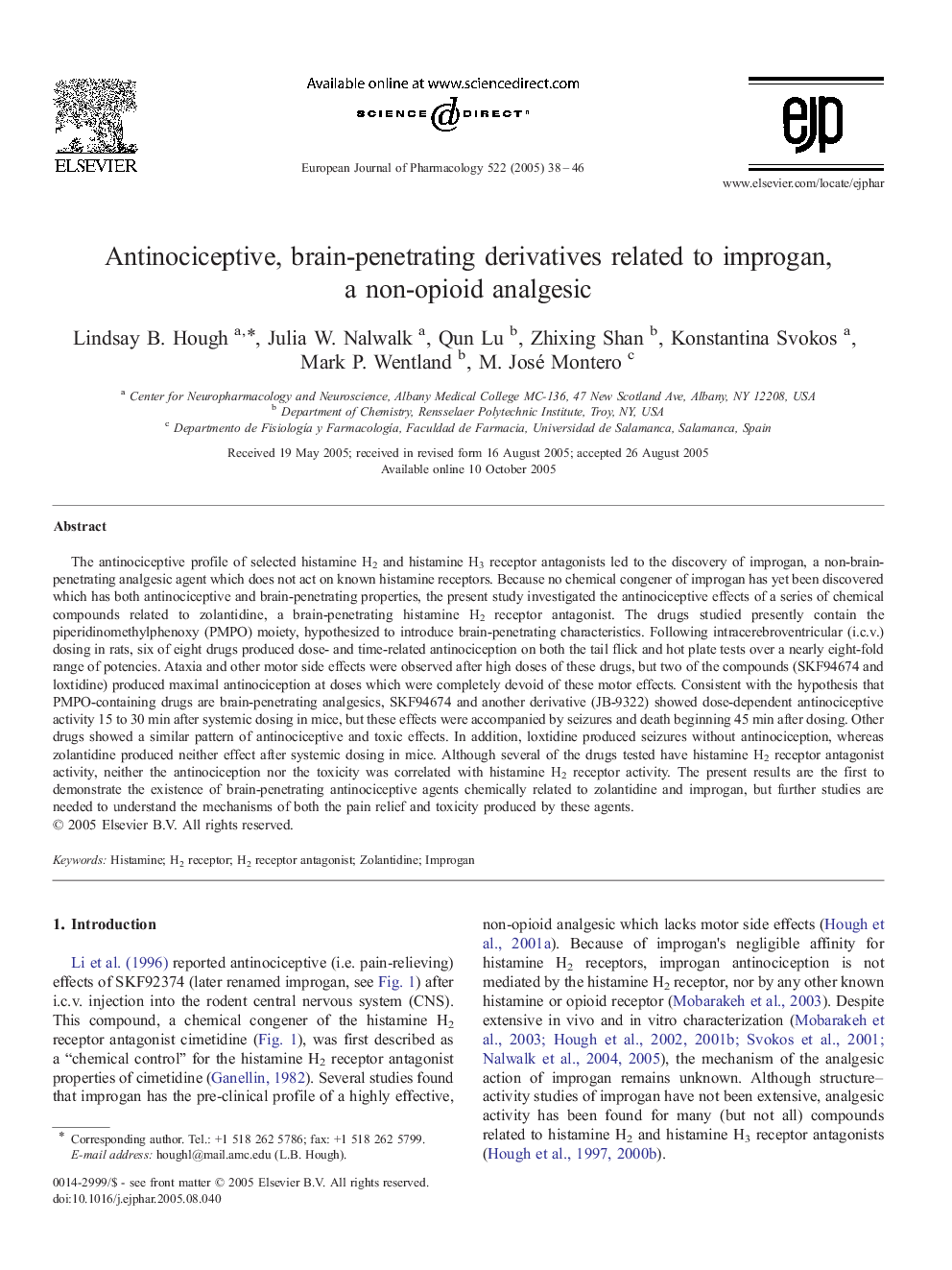| Article ID | Journal | Published Year | Pages | File Type |
|---|---|---|---|---|
| 9921064 | European Journal of Pharmacology | 2005 | 9 Pages |
Abstract
The antinociceptive profile of selected histamine H2 and histamine H3 receptor antagonists led to the discovery of improgan, a non-brain-penetrating analgesic agent which does not act on known histamine receptors. Because no chemical congener of improgan has yet been discovered which has both antinociceptive and brain-penetrating properties, the present study investigated the antinociceptive effects of a series of chemical compounds related to zolantidine, a brain-penetrating histamine H2 receptor antagonist. The drugs studied presently contain the piperidinomethylphenoxy (PMPO) moiety, hypothesized to introduce brain-penetrating characteristics. Following intracerebroventricular (i.c.v.) dosing in rats, six of eight drugs produced dose- and time-related antinociception on both the tail flick and hot plate tests over a nearly eight-fold range of potencies. Ataxia and other motor side effects were observed after high doses of these drugs, but two of the compounds (SKF94674 and loxtidine) produced maximal antinociception at doses which were completely devoid of these motor effects. Consistent with the hypothesis that PMPO-containing drugs are brain-penetrating analgesics, SKF94674 and another derivative (JB-9322) showed dose-dependent antinociceptive activity 15 to 30 min after systemic dosing in mice, but these effects were accompanied by seizures and death beginning 45 min after dosing. Other drugs showed a similar pattern of antinociceptive and toxic effects. In addition, loxtidine produced seizures without antinociception, whereas zolantidine produced neither effect after systemic dosing in mice. Although several of the drugs tested have histamine H2 receptor antagonist activity, neither the antinociception nor the toxicity was correlated with histamine H2 receptor activity. The present results are the first to demonstrate the existence of brain-penetrating antinociceptive agents chemically related to zolantidine and improgan, but further studies are needed to understand the mechanisms of both the pain relief and toxicity produced by these agents.
Related Topics
Life Sciences
Neuroscience
Cellular and Molecular Neuroscience
Authors
Lindsay B. Hough, Julia W. Nalwalk, Qun Lu, Zhixing Shan, Konstantina Svokos, Mark P. Wentland, M. José Montero,
